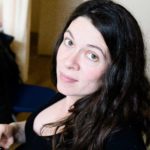Link to Pubmed [PMID] – 23994547
Behav. Brain Res. 2013 Nov;256:677-89
Mouse ultrasonic vocalisations have been often used as a paradigm to extrapolate vocal communication defects observed in patients with autism spectrum disorders (ASD). The role of these vocalisations as well as their development, structure and informational content, however, remain largely unknown. In the present study, we characterised in depth the emission of pup and adult ultrasonic vocalisations of wild-type mice and their ProSAP1/Shank2(-/-) littermates lacking a synaptic scaffold protein mutated in ASD. We hypothesised that the vocal behaviour of ProSAP1/Shank2(-/-) mice not only differs from the vocal behaviour of their wild-type littermates in a quantitative way, but also presents more qualitative abnormalities in temporal organisation and acoustic structure. We first quantified the rate of emission of ultrasonic vocalisations, and analysed the organisation of vocalisations sequences using Markov models. We subsequently measured duration and peak frequency characteristics of each ultrasonic vocalisation, to characterise their acoustic structure. In wild-type mice, we found a high level of organisation in sequences of ultrasonic vocalisations, suggesting a communicative function in this complex system. Very limited significant sex-related variations were detected in their usage and acoustic structure, even in adult mice. In adult ProSAP1/Shank2(-/-) mice, we found abnormalities in the call usage and the structure of ultrasonic vocalisations. Both ProSAP1/Shank2(-/-) male and female mice uttered less vocalisations with a different call distribution and at lower peak frequency in comparison with wild-type littermates. This study provides a comprehensive framework to characterise abnormalities of ultrasonic vocalisations in mice and confirms that ProSAP1/Shank2(-/-) mice represent a relevant model to study communication defects.



